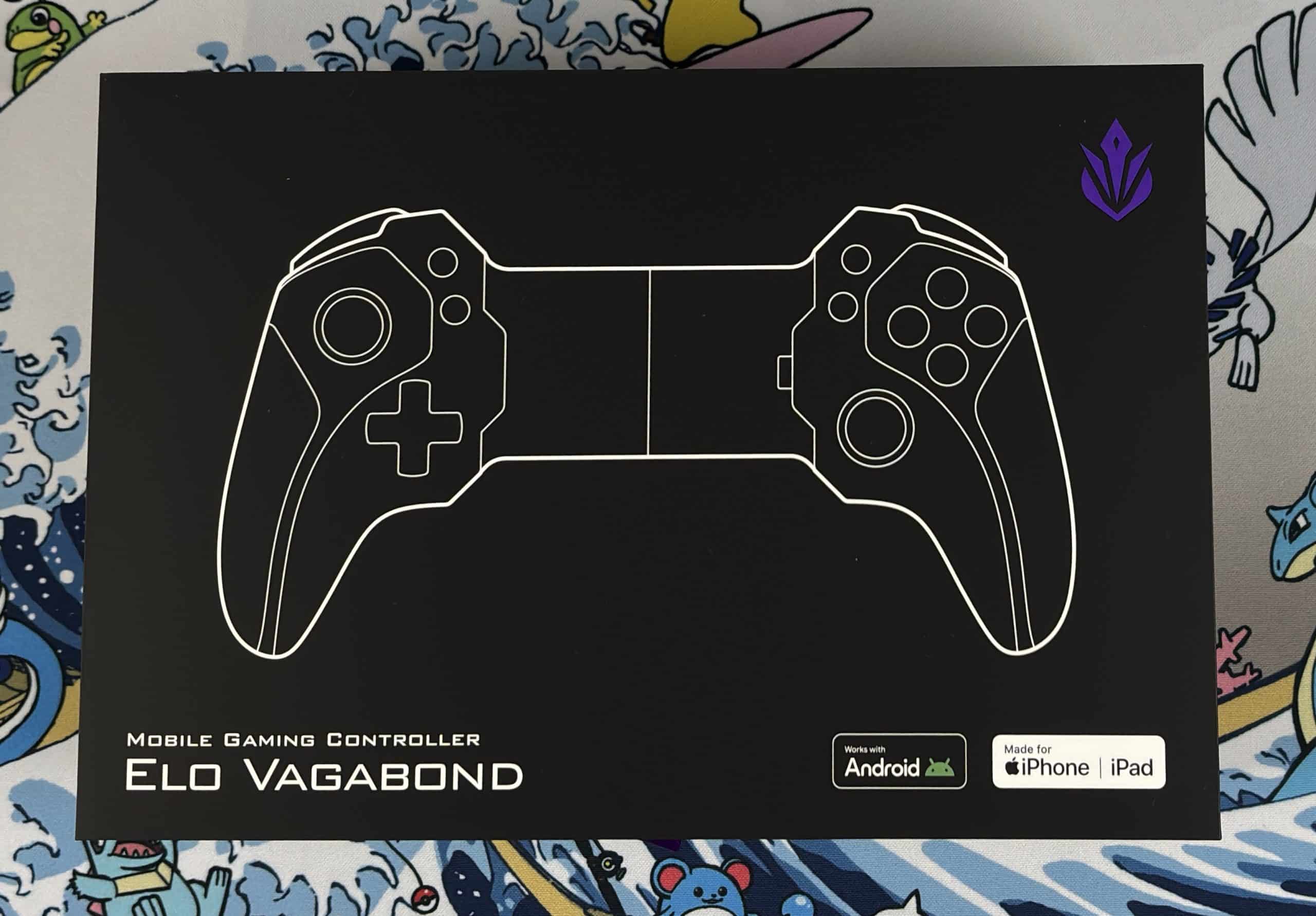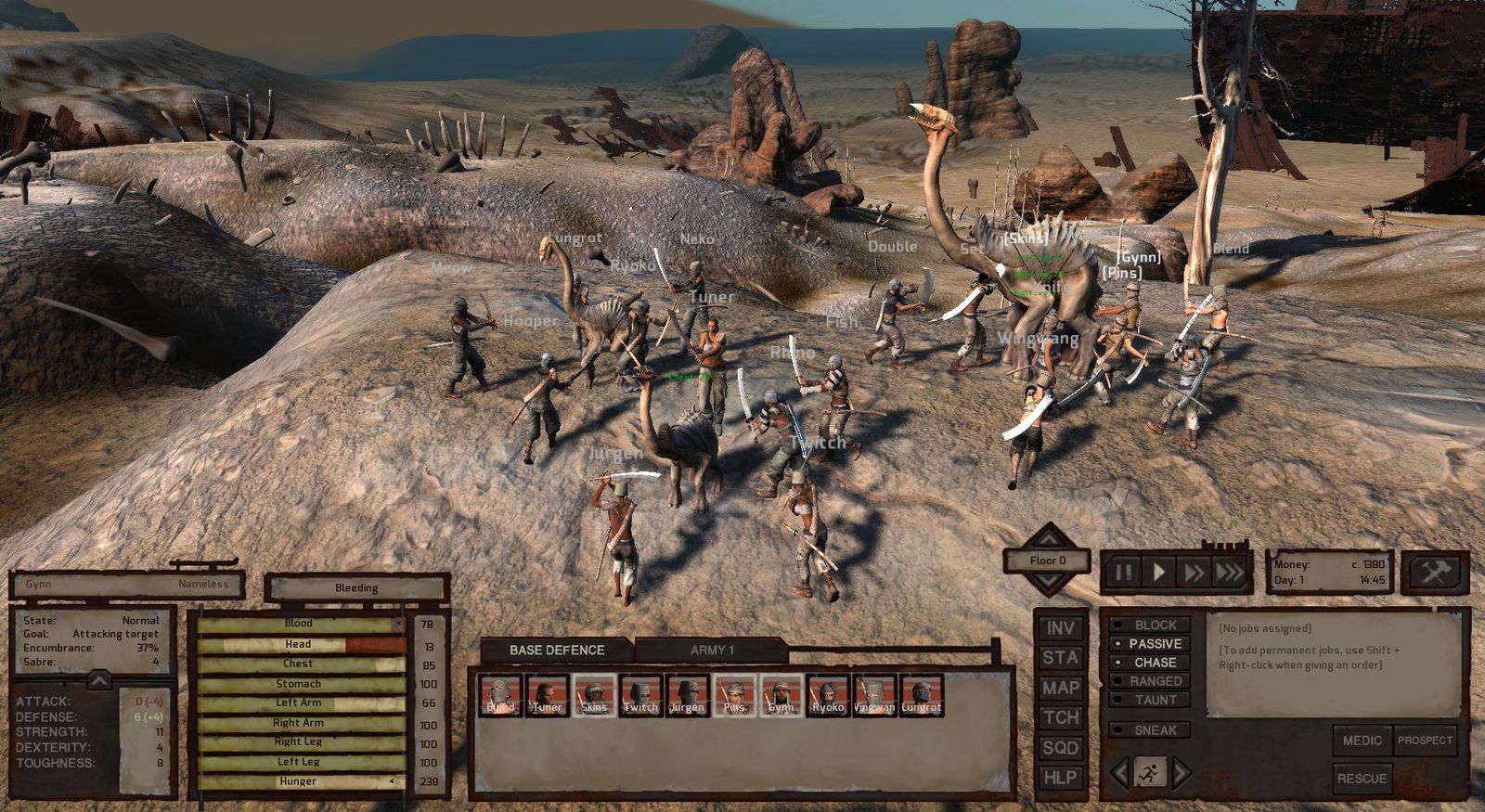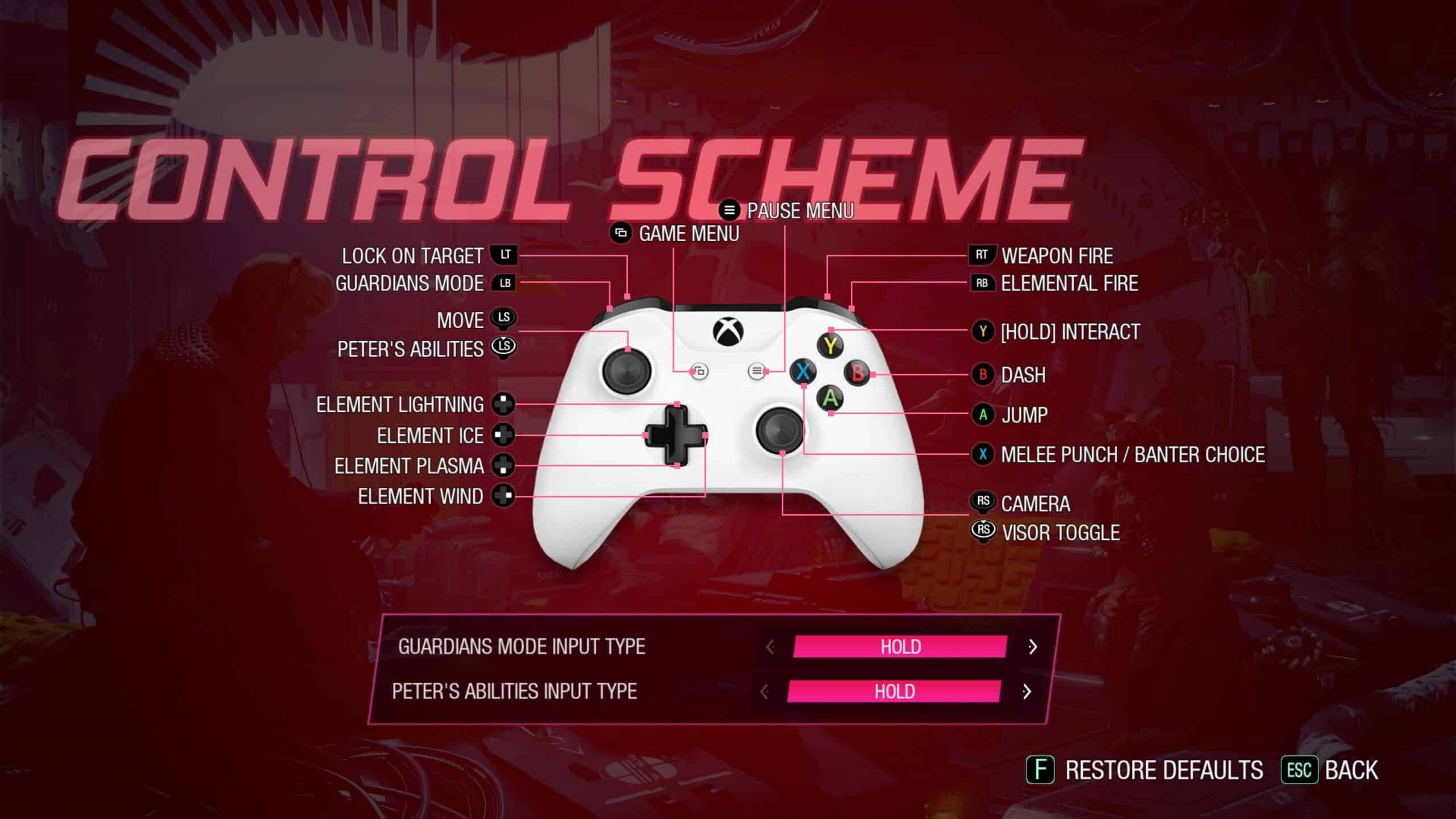It’s always exciting to see a new name enter a space. Usually they offer a different take on the product, or deliver a lot of value compared to established brands. Given ELO started their journey of Vagabond with a Kickstarter campaign there is some natural apprehension. With so many campaigns going nowhere, or the final product coming up short, is Vagabond worth the hype, or is it another scam?
ELO Vagabond Review Overview
Unboxing
Right off the bat I was shocked by ELO Vagabond’s packaging. Pretty much everything about the package shows ELO views this as a premium product, and wants owners to feel like they’re getting something special.
On top there is an outline of ELO Vagabond, confirmation it works with Android/iOS, and the company logo embossed with a glossy finish. Grabbing the package confirms it has a satin-like finish that is smooth, and inviting to the touch. No further details are shown, besides a barcode, and copyright information on the back.

Pulling the purple ribbon opens the box in a way where the contents are pushed forward. It’s a small touch, but it makes a substantial impact on impression. So much so anyone I showed the feature to immediately noted they loved the presentation.
On top is a small message to purchasers. It’s a nice touch, one that is echoed throughout the product packaging.
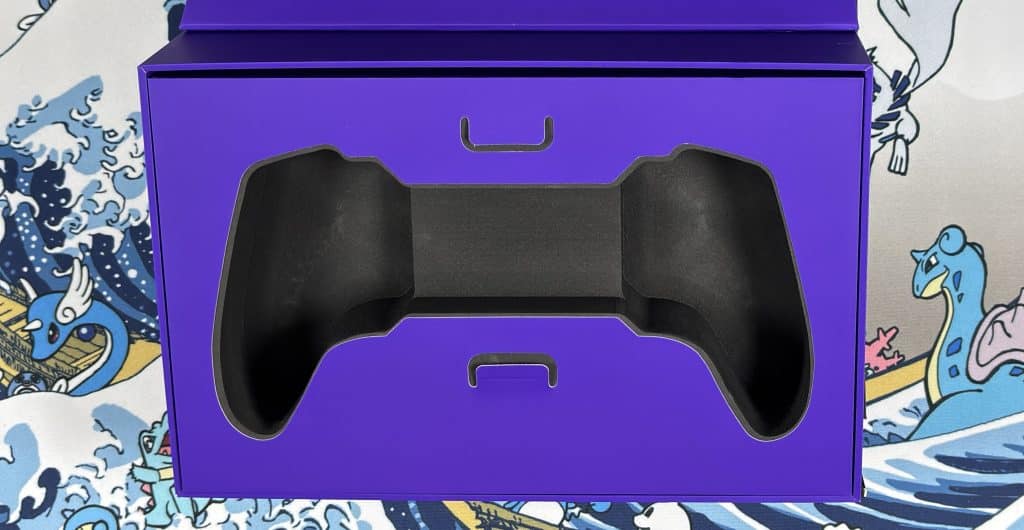
Safe and Secure
On the other part is the controller that fits almost perfectly in the foam cutout. It’s so precisely cut I can’t even see a gap between a number of the edges. In the middle is also a small insert mentioning the official app, with a quick start guide on the reverse.
The Intended Presentation was Likely the First
Under the foam insert is a letter containing another guide, the official manual, and a sticker. The Kickstarter listing mentions a pin, so that might be an additional benefit exclusive to backers. Below that is a series of adapters. I was surprised to see they had all fallen out by the time I opened my package. Admittedly, it took away from immaculate presentation, though I appreciate no further resources were used to ensure they stayed in place.
Accessories
Despite falling out of their set locations, each adapter is branded with its sizing, and position. Roughly 5 minutes later they were all in their correct positions. I am guessing the original position has the two pieces forming an X, not that it really matters.
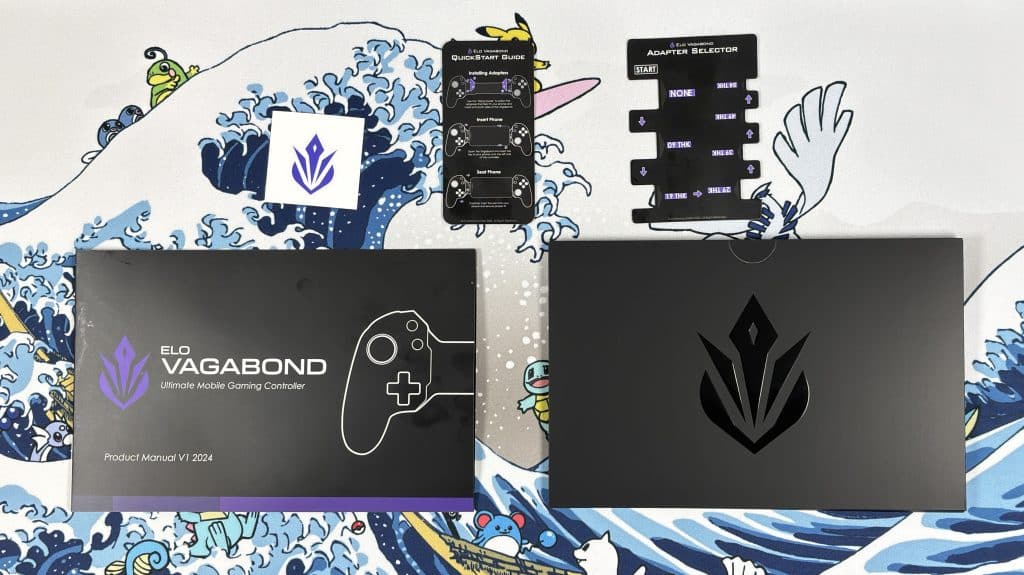
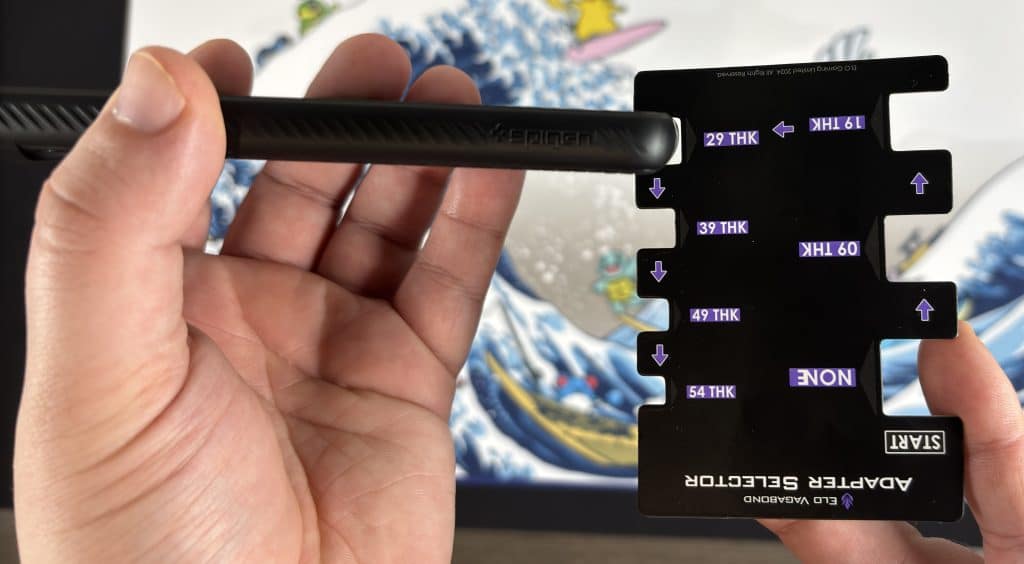
The only other accessory that matters is the Adapter Selector. This is a thick piece of cardboard with various gaps. I personally have an iPhone 15, and Pixel 7 with Spigen cases. Both of these are consider 29 THK. Without the case it’s around 39 THK. I am not entirely sure what would use 54 THK, but it’s great to see essentially any remotely reasonable option can be used with the controller.
Design
Contrary to the high expectations set by the packaging, I was underwhelmed with how ELO Vagabond felt.
It reminded me a lot of how Revolution X Pro felt. The body itself feels like a cheaper, slightly more coarse, plastic. ELO also claims it has rubberized grips, though it feels closer to texturized plastic. It’s honesty so close to how an Xbox controller feels, that is probably the best way to describe it.
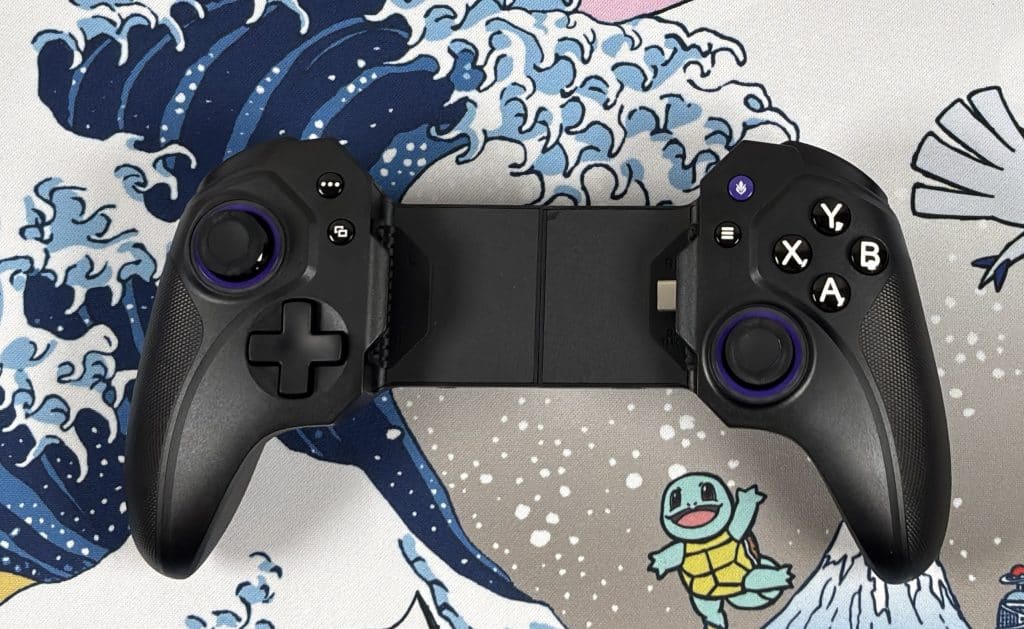
That comparison is likely quite apt considering ELO Vagabond seems to be based off the Xbox controller design. It features the same button arrangement with a similarly glossy finish. The triggers are indistinguishable at a glance, to even the thumbsticks having the same feel/structure.
Despite the strong similarities, ELO Vagabond offers a handful of improvements. The most notable being Hall Effect joystick/triggers, which should combat drift long term. It also boasts mechanical buttons, so think mouse click versus button press. On the back are two macro buttons. Both buttons are positioned perfectly for my middle fingers, complete with the option to enable/disable via slider. Once it’s engaged the button will no longer click preventing accidental clicks.
One notable negative is the lack of profiles. I couldn’t find a way to add them in the application, or set them up on the controller itself. Not the biggest loss, just a nice quality of life feature that will ideally be added in the future. Especially if said function could be bound to one of the macro buttons.
Set Up
Once the sizing is determined, simply pulling off the current adapter should remove it with relative ease. Next, just place the correct one in the location. Please note, it might require some force to ensure everything is in its proper location.
Getting the phone into ELO Vagabond was something of a struggle for me. The quick start guide mentions going from the USB-C port first. Essentially, it needs to be pulled apart, pushed upwards with the phone, and then pushed into the slot. I got better at it after five or so attempts, not that I ever got good at it. Be warned, there is also the potential for damage from excessive failures. I got two light scratches on my iPhone, plus some scratching on the bottom of my Pixel 7. It isn’t serious damage, just normal wear/tear you’d expect from missing the port, though something I’d highlight for anyone bothered by that stuff.
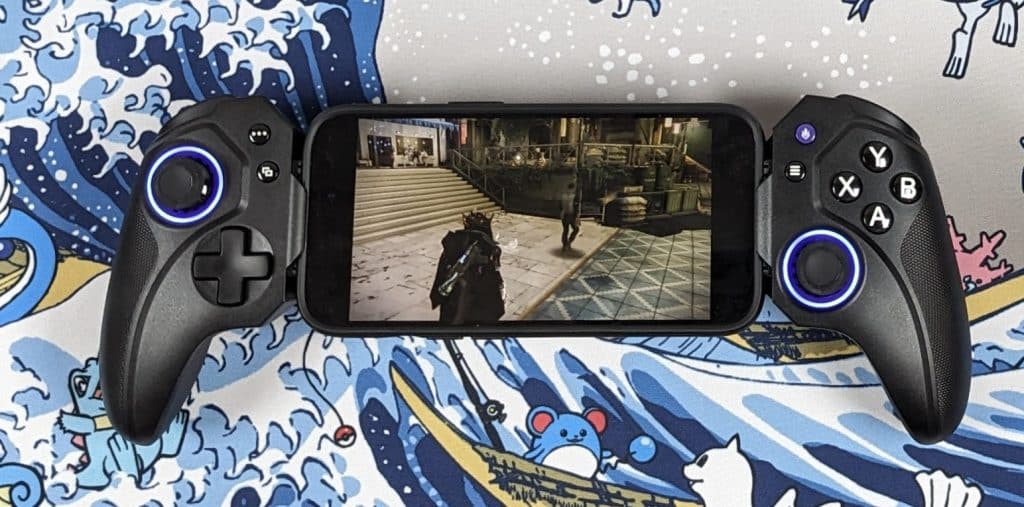
Fun on the Go
From there getting ELO Vagabond to work was an uphill battle. Initially it didn’t interact with my iPhone at all. I tried swapping the adapters to see if it was the fit, removed my case in hopes it would better connect, and even downloaded the application with the troubleshooting option simply telling me to just keep trying.
In all I spent about an hour and a half without making any progress. When I eventually resigned myself to plug it in, finally causing the LEDs to turn on, and my phone to charge, it still remained inoperable.
Thankfully, I also have an Android phone that offered a better experience. Unlike iOS, ELO Vagabond connected immediately. I could navigate my home screen, confirming the device actually worked. I tried the application, which worked flawlessly when powered by Pixel 7, and stopped when connected to power. At this point I saw an update was available, installed it, and after that ELO Vagabond started working on both platforms.
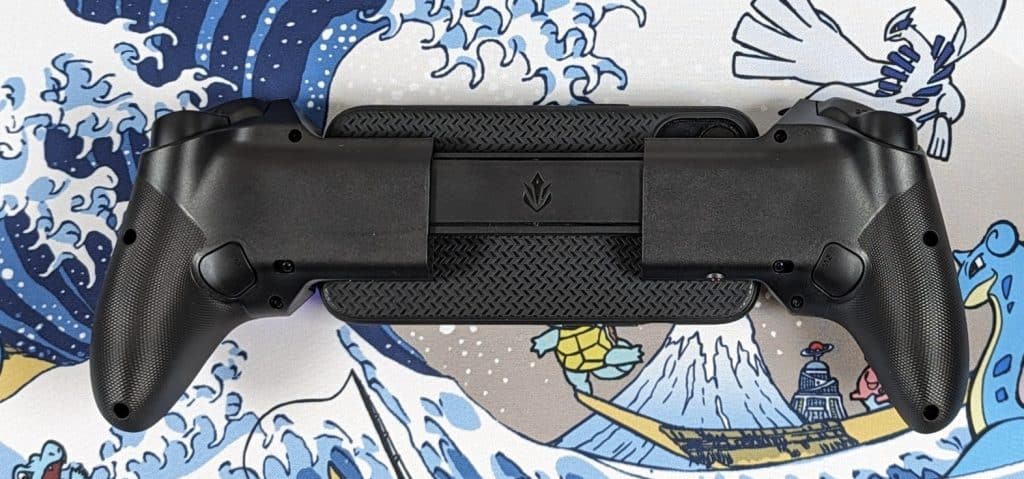
In all I think I spent around 3 hours troubleshooting. This is rather disappointing, as the manual claims it’s a “plug and play” device. Logically newer devices will come with this firmware out of the box, along with further improvements ideally coming with time. Hopefully that will result in it being an actual plug and play experience sometime in the near future.
After ELO Vagabond was connected, using it remained something of an uphill battle. On Android I was unable to use it with remote play on PlayStation. ELO’s official reddit account confirmed this is an issue with Vagabond itself, and an update would be ready a few weeks ago. A Kickstarter update mentions the same thing with a similar time table. At the time of posting both iPhone/Android show the current version as 1.6.379, which released on Sept. 25. Odds are said update will be available in the near future, and ideally fix these connection issues.
Update: Version 1.6.410 finally released addressing concerns about PS Remote Play, and other fixes on Android. After seeing this I did some brief testing, and while I can confirm it works, it isn’t without issues. For this reason I suggest reading this section for more information.
Immediately after I tried it on iOS, and much to my delight it worked flawlessly. Well, ELO Vagabond worked flawlessly, the PlayStation application itself offered its own struggles. Other applications I tried offered a similar experience. Most worked with ELO Vagabond, it just came down to figuring out what changes needed to be made. Like in the case of Genshin Impact it was having to download the entire game to enable controller support.
Performance
When everything was set up, and running correctly, I was pleased with how ELO Vagabond performed. When connected to my PlayStation 5 it performed about where I’d expect a controller to be. Maybe a slight delay here/there, but competent enough where I could complete Vesper’s Host in Destiny 2 without dying. We even finished the first two encounters on Master just to see if it could perform as needed in a high pressure situation.
I also tried using ELO Vagabond a few times on the go with no complaints. The only issues that arose were technical things like audio skips, or needing to lower the resolution. It honestly made me wish I had a PlayStation Portal, as I couldn’t imagine the experience being significantly better. It also left me hoping ELO sells the Vagabond case from their Kickstarter campaign as I could legitimately see myself using this instead of my ROG Ally on shorter trips/certain situations.

Games running off the internal hardware performed great as well. One I made sure to experience was Genshin Impact, which offered no performance complaints.
For fun I also tried this with a couple different controllers, and while I don’t think ELO Vagabond performed better, unless we include the macro buttons, I legitimately have no complaints. In a lot of ways it’s crazy I can play a fighting game on the go, using a pro controller, and have no issues dominating an AI opponent, or finish a Destiny 2 raid.
Update: Android and PS Remote Play
On Oct. 22 ELO released Version 1.6.410, which supposedly adds controller support for Call of Duty Mobile, and more importantly, PS Remote Play. Given this was a substantial concern in this review I spent roughly 3 hours testing it to see how it performed.
I started by playing New World: Aeternum, and didn’t notice any problems besides the occasional glitch. Sometimes my character would draw their bow, or in some cases randomly fire an arrow. It was infrequent enough where I didn’t notice any pattern, nor did it hinder me from completing objectives.
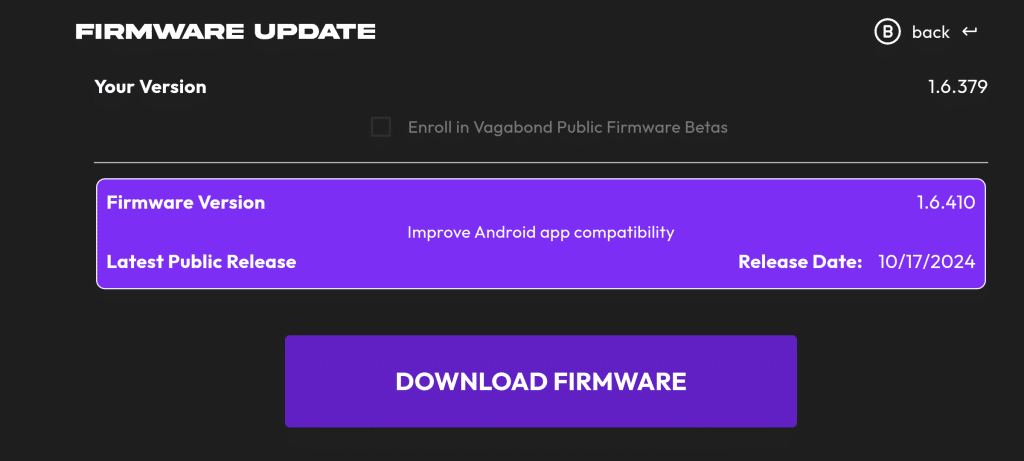
Since I always test multiple games, I followed up by trying Destiny 2. It started with a couple harmless quirks. At first I needed to push the cross button on the screen, after which the controller worked, along with touchpad functionality not working as intended. Writing it off as quirks with the app, a potential unfortunate outcome of Sony also updating the PS Remote Play app today, I found myself constantly scoped.
Unless I was running, or interacting with something, my character was scoped at all times. At this point I theorized the same was happening in New World: Aeternum, I just didn’t notice it due to how movement works. A quick return confirmed my hypothesis, so I tried The First Descendant to see if I would have a better experience.
Not only did my character exhibit the same quirk, this time I found myself uncontrollably firing my gun. I tried a number of things to stop it, but nothing short of running resolved the problem.
Following this I reset my Pixel 7, updated to the latest firmware (Android 14), and then thought I’d see if my iPhone had the same issue. For this test I admittedly didn’t play long, about 30 minutes total, though experienced no issues. I then tried resetting my PS5, tested for another 10 minutes on iOS, again with no issues. Finally, I disconnected my iPhone, went back to Pixel, and immediately experienced the same issues.
For the sake of fairness I tried the PS Remote Play app on my Pixel 7 without ELO Vagabond, and had no issues. After repeating the aforementioned efforts I brought out my old Motorola Edge (2021). After confirming this specific model worked, I immediately experienced the same problem. Unfortunately, the only other Android device I have is a 10″ tablet that doesn’t fit in the device, so I can’t perform additional tests.
Battery
One cool feature included with ELO Vagabond is passthrough charging. The website/manual list it as a “fast charging” device. Unfortunately, I couldn’t find any metric that listed expected performance, so I did a brief test.
Using my 20w power adapter I got about 5 percent battery in 15 minutes of charging. When I removed ELO Vagabond I got 20 percent battery in 15 minutes of charging. In both situations the device was idle, and I performed it with a couple phones at varying percents. In most situations it ended up charging at a third to a quarter the speed compared to a direct connection.

Ultimately, what is really important is how quickly it charges when being used. With Genshin Impact running natively, I lost approximately 5 percent battery in 15 minutes using ELO Vagabond. In all that would be a gaming session of roughly 5 hours. When charging through ELO Vagabond I gained roughly 2.75 percent battery life in the same 15 minute period.
Given the previous 5 percent gain I repeated the test a few times and got 2, 2, 3, and 4 percent resulting in the aforementioned 2.75 percent average. The exact amount isn’t terribly important, as any gain indicates ELO Vagabond can be played indefinitely when connected to external power. This makes it a viable alternative in situations where extended play sessions, like a plane trip, might come into play.
Headphones
Along with USB-C passthrough charging, ELO Vagabond includes a 3.5mm headphone connection. Given most modern devices will have bluetooth, and I imagine most people on the go will opt for something more compact like true wireless headphones, I still wanted to see what the connection was cable of.
Much to my delight, I had no issues powering a higher end headset like MM-100. The output sounded less impactful compared to a DualSense, but more than usable for this situation. That being said, sound quality varied based off the source. Games running on the actual hardware sounded good, to great, with streaming options being serviceable. This is more of a streaming issue as opposed to the hardware itself.

In all I could see using that, or ignoring the game audio entirely and just enjoying music from somewhere else. If nothing else, I am happy the option exists, and is good enough where I don’t need to verify it’s worth using with my headset beforehand.
For fun, I tried using the charging port with a headset dongle. After trying my HyperX Cloud Mix Buds, EPOS GTW 270 Hybrid, and Audeze Maxwell, none of them could connect on either Android, or iOS. Disappointing, though not surprising given this function was not listed.
Application
There really isn’t much to the official application, ELO Unleashed. It allows players to change inputs, add commands to the macro button, update firmware, and highlights a couple games.
The most interesting part is the upcoming Virtual Touch Mapper. The idea behind this upcoming feature is to bind button presses to touch inputs so unsupported games can still work with the controller.
ELO Vagabond Review Verdict

ELO Vagabond is in an unusual place. While set up was rough, and there are still some minor bumps, it’s the type of experience that will vary wildly. Given newer units will come with more recent firmware, along with the Android fix for Remote Play set for the near future, I still think it’s fair to say it’s worth of an Editors’ Choice award.
At its core it’s an experience I enjoyed so much I legitimately I would strongly consider accessories if they were available. And while it has some strong competition in the form of Razer Kishi V2, Backbone, and Scuf Nomad, none of these offer the traditional controller feel. That alone bridges one of the biggest gaps between this, and PlayStation Portal. So for these reasons I would strongly consider it for yourself, or possibly a gift this holiday season.
Editor’s Note: ELO Vagabond was provided to us for review purposes.

